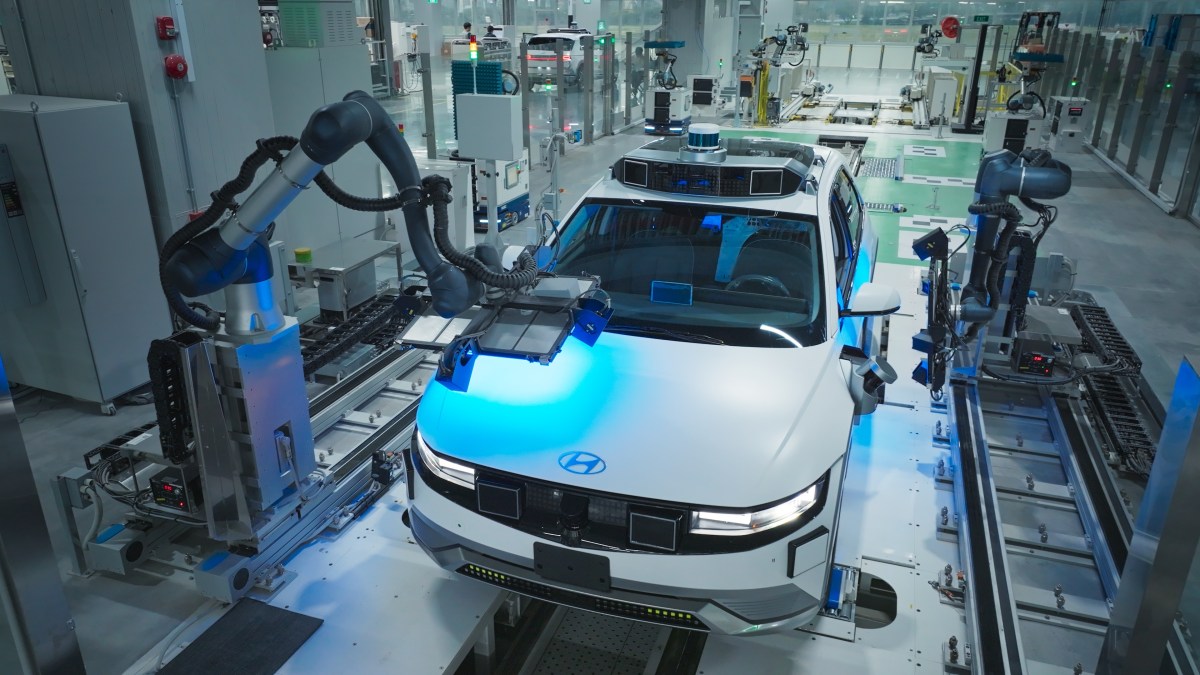FARO Technologies, Inc. (NASDAQ:FARO) Q1 2024 Earnings Conference Call May 2, 2024 8:00 AM ET
Company Participants
Mike Funari – Sapphire, IR
Peter Lau – President and CEO
Matt Horwath – CFO
Conference Call Participants
James Ricchiuti – Needham
Greg Palm – Craig-Hallum
Operator
Good day, everyone, and welcome to the FARO Technologies First Quarter 2024 Earnings Call.
For opening remarks and introductions, I will now turn the call over to Michael Funari at Sapphire Investor Relations. Please go ahead.
Mike Funari
Thank you, and good morning. With me today from FARO are Peter Lau, President and Chief Executive Officer; and Matt Horwath, Chief Financial Officer.
Yesterday after market close, the company released its financial results for the first quarter of 2024. The related press release and Form 10-Q is available on FARO’s website at www.faro.com.
Please note certain statements in this conference call, which are not historical facts may be considered forward-looking statements that involve risks and uncertainties, some of which are beyond our control and include statements regarding future business results, product technology development, customer demand, inventory levels, our outlook and financial guidance, economic industry projections or subsequent events.
Various factors could cause actual results to differ materially. For a more detailed description of these and other risks and uncertainties, please refer to today’s press release and our annual and quarterly SEC filings. Forward-looking statements reflect our views only as of today, and except as required by law, we undertake no obligation to update or revise them. During today’s conference call, management will discuss certain financial measures that are not presented in accordance with the U.S. generally accepted accounting principles or non-GAAP financial measures.
In the press release, you will find additional disclosures regarding these non-GAAP measures, including reconciliations to comparable GAAP measures. While not recognized on GAAP, management believes these non-GAAP financial measures provide investors with relevant period comparisons of core operations. However, they should not be considered in isolation or as a substitute for a measure of financial performance prepared in accordance with GAAP.
Now I’d like to turn the call over to Peter Lau.
Peter Lau
Thank you, Mike. Good morning, and welcome, everyone, to our call.
In the first quarter, our focus on executing the strategic plan we outlined in March, continued to drive meaningful results. We again exceeded our targets in the quarter, delivering $84.2 million in revenue, which was towards the high end of our guidance range, $0.09 of non-GAAP EPS, which was above the high end of our guidance range, $5.6 million of adjusted EBITDA and $4.2 million of free cash flow.
We’ve taken significant strides in the past few quarters in enhancing the operational efficiency of our business. Our first quarter earnings and cash flow demonstrate this progress, marking the first time in four years, where we’ve achieved positive non-GAAP EPS and cash flow during what is traditionally our slowest quarter.
This accomplishment is particularly noteworthy as it signifies a fundamental shift in our operating model, establishing a new starting point from which we expect to benefit from in the forthcoming quarters. From a top line perspective, in the first quarter, we continued to see strong demand across a wide range of industries.
The better-than-expected performance in the quarter was mainly driven by several large manufacturing orders out of the Asia Pacific region. While pleasantly surprised with the orders, they tended to be specific to individual customer situations. We remain cautious on the overall near-term outlook in the Asia Pacific region, given the ongoing challenges in the construction market within China.
Across the broader global market, we have seen our overall pipeline continue to grow, but have seen a shift in customer behavior in mature markets such as the U.S. and Western Europe in the quarter. There has been both a move to prioritize larger capacity-related investment initiatives and increasing caution on the outlook within commercial construction.
As a result, we’ve seen an elongating sales cycle in these markets, which is evidenced in our first quarter geographical mix. Operationally, we again saw a notable year-over-year improvement in gross margin, along with a positive sequential trend considering our revenue seasonality.
As we have discussed in prior calls, our focus on variable cost productivity, mitigation of broker fees and supply chain localization efforts within Southeast Asia continue to progress as planned. These actions contributed meaningfully to the first quarter results, and we expect this focus on operational excellence to positively impact our results over the next several quarters. Taken all together, our non-GAAP gross margin improved 420 basis points year-over-year to 51.8%.
As I mentioned earlier, from a cash flow perspective, we successfully generated $4.2 million in free cash flow in the first quarter, marking our second sequential quarter of meaningful cash flow generation and the first positive Q1 in several years. The initiatives we put in place to monetize our balance sheet are paying off, and we are increasingly confident in our ability to drive sustained cash flow generation under the current market conditions.
While we’ve made great strides in improving financial performance over the past several quarters, it’s important to note we’re still in the early stages of refining our execution strategies and enhancing outcomes. Our team fully understands the extent of work ahead and is dedicated to delivering on our plans. The adjustments made to our cost structure thus far, evidenced by our first quarter expense base, improving gross margins and working capital efficiencies demonstrate the progress we’ve made in refining our operational framework.
Moving forward, we remain focused on productivity and continuing to expand gross margins while simultaneously making strategic investments in new products and technologies. We understand the importance of continuing to foster innovation and growth through focused investments in our core.
By maintaining this balanced approach, we aim to both increase shareholder value and expand our competitive position in the marketplace. On the product front, I’m pleased to report that now two quarters after the launch, feedback on our new Orbis mobile scanner remains very positive. Notably, the revenue for our mobile scanning solutions has increased double digits year-over-year, reflecting the increasing adoption of our technology.
In addition, the success of Orbis underscores the growth opportunity potential of expanding into adjacent markets within our core. By targeting the mobile scanning market with a diversified set of solutions, we’ve been able to expand our served addressable market, providing an initial proof point towards our long-term growth strategy of entering markets adjacent to our core, where FARO has the right to play and the right to win. Bolstering our software offering in the last quarter, we showcased a strong software release cadence with advancements across our portfolio.
Multiple software updates were rolled out, solidifying our commitment to enhancing customer experience. A key highlight was the enhancement of FARO CAM2 our leading 3D metrology software with an upgraded CAD translator, which supports additional CAD formats and improves interoperability. Additionally, FARO Connect, our mobile scanning software received advanced processing options tailored to diverse use cases, empowering customers with greater control of their data.
We also unveiled a groundbreaking innovation in FARO Zone 3D aimed at public safety customers, the MassZone collision prediction system, facilitating the creation of immersive what-if crash animations by seamlessly blending real-world and digital data. Furthermore, with the release of 3D model import, the FARO Sphere XG digital reality cloud solution has become the singular platform where AECO professionals can seamlessly visualize 3D models alongside the reality capture data.
Our R&D roadmap, which integrates both hardware and software into value-added solutions for our customers is firmly directed towards increasing our served addressable market by 40% over our strategic horizon. As we move through 2024, we look forward to discussing impactful new product launches with you in greater detail, including the markets they target and opportunities they represent.
To further support the momentum in our business and align the success of all of our stakeholders, I’m very excited to share that we recently announced a stock ground program for all FARO employees. By extending ownership opportunities to all levels of the organization, we align the interest of every single employee with the company’s long-term goals, driving motivation, creativity and dedication to those goals. This program underscores FARO’s commitment to our people and our vision of building a stronger, more resilient organization for the future.
At our recent investor event held in March, we outlined our commitment to enhancing shareholder value through a strategic approach anchored on three fundamental principles: first, accelerating revenue growth ahead of the market trends we operate within; second, to grow earnings at a pace exceeding that of our revenue expansion; and third, to expand our free cash flow at a velocity surpassing our earnings growth. FARO operates within highly promising markets poised for growth.
By prioritizing our core customers and understanding their evolving needs, we position ourselves to deliver innovative solutions that effectively address their most pressing challenges, giving us the opportunity to outpace market growth rates. Through the combination of diligent efforts to expand our gross margins and a milestone funding approach to operating expense management, we expect to be in a position to realize meaningful operating leverage as revenue grows. This disciplined approach ensures sustainable growth while fostering increased profitability and facilitating heightened cash flow generation.
The implementation of the strategic playbook over the last four quarters has significantly bolstered FARO’s financial standing. We are enthusiastic about the continued execution of this strategy in the years ahead and are confident in its capacity to drive substantial shareholder value creation.
With that, I’ll now turn the call over to Matt to provide an overview of our first quarter financial resorts and our second quarter outlook.
Matt Horwath
Thank you, Peter, and good morning, everyone.
First quarter revenue of $84.2 million was approximately flat with the first quarter of 2023. Geographically, demand strength in the Europe and Asia Pacific regions helped offset incremental softness in the Americas as a result of lengthening sales cycles, which Peter mentioned earlier. First quarter hardware revenue of $52.6 million was down 4% year-over-year, while software revenue of $10.9 million was up 6% and service revenue of $20.7 million increased by 5%. Recurring revenue was $16.7 million and represented 20% of sales.
GAAP gross margin was 51.4% and non-GAAP gross margin was 51.8% for the first quarter of 2024 compared to 47.6% in 2023. As Peter mentioned, in the first quarter, we executed on our variable cost productivity initiatives, including mitigating broker fees and incremental benefits from supply chain localization.
Non-GAAP gross margin increased 420 basis points year-over-year. GAAP operating expenses were $48.6 million and included approximately $5.2 million in acquisition-related intangible amortization and stock compensation expenses and $2.7 million in restructuring and other executive transition costs. Non-GAAP operating expense of $40.7 million was down $8.1 million from Q1 last year as we realized the benefit of our restructuring efforts and continued productivity improvements.
GAAP operating loss was $5.3 million in the first quarter of 2024 compared with an operating loss of $18.6 million in the first quarter of 2023. Non-GAAP operating income was $3 million in the first quarter of 2024 compared to a loss of $8.3 million in the first quarter of 2023.
Adjusted EBITDA was $5.6 million for approximately 6.6% of sales compared to an EBITDA loss of $5.5 million in the first quarter of 2023. Our GAAP net loss was $7.3 million or $0.38 per share. Our non-GAAP net income was $1.7 million or $0.09 per share for the first quarter of 2024 compared to a net loss of $7.1 million or $0.38 per share in Q1 2023.
Our cash and short-term investment balance at the end of the quarter was $99.3 million, up $3 million from Q4 due to profitability levels and continued working capital improvements. Given our current accounts receivable balance, expectations for revenue and our new expense base as well as further enhancements to our inventory management, we continue to expect to be cash flow positive throughout the first half of 2024.
While we are pleased with our first quarter results and view them as evidence the business is moving in the right direction, we remain cautious in the near term. From a geographic perspective, we do not expect the construction market in China to rebound in the second quarter. And together with the elongating sales cycles in select geographies, we want to remain thoughtful and measured in setting expectations for the second quarter of 2024.
Although the macro environment remains choppy, our confidence level continues to increase in our ability to deliver on our execution priorities that we outlined during our March Investor event, specifically in our ability to expand gross margins, control our operating expenses and generate positive free cash flow.
As a result, at present FX rates, we expect second quarter revenue of between $79 million and $87 million. At those revenue levels and given corresponding non-GAAP gross margin between 51% and 52.5% and non-GAAP operating expenses of between $41 million and $43 million, we would expect non-GAAP earnings per share ranging from negative $0.08 per share to positive $0.12 per share for second quarter profitability.
This concludes our prepared remarks. And at this time, we’d be pleased to take your questions.
Question-and-Answer Session
Operator
[Operator Instructions] I will take our first question from James Ricchiuti with Needham. Please go ahead.
James Ricchiuti
Hi. Thank you. Good morning. So I’m looking at the low end and the midpoint of your guidance and it implies virtually no seasonal improvement, which you almost always experience. So I’d like to go into that a little more. Is that conservatism? Or are you seeing something additional in the market that maybe represents more headwinds exiting Q1? Or are there some comparisons at work here? You’ve talked about China still being weak. And clearly, there were some larger orders that you did call out in APAC, which I’d like to follow up on. But I wonder if you could frame that a little bit for us.
Peter Lau
Hi Jim, this is Pete. Good morning to you as well, and thanks for the question. I mean as we look at our range, normally you would see seasonality. What we talked about in our remarks was a couple of large orders out of China, which a little bit skewed our expectations and our geographical mix in the first quarter. And coupled with some slowing in the developed markets due to larger capacity initiatives from some of our customers. We saw a little bit of a slowdown in longer sales cycles in those developed countries, along with some large orders that we don’t necessarily expect to repeat in Q2. So, as we think about the seasonality of the business, you’re right, normally it goes up.
But if you take those orders out of Q1, the Asia Pacific orders out of Q1, we would expect to see that seasonality along with a cautious outlook in those developed regions as we see kind of how the second quarter develops.
James Ricchiuti
And can you elaborate on these large orders in APAC. Were they entirely in China? Or were there some other countries? What kind of customer or application, and was this direct sale or a channel partner as you called out last quarter?
Peter Lau
Yes, it’s a good question, Jim. And I would say a mix between direct sale and channel partners. But as we’ve seen the construction market in China continued to remain muted. We’ve shifted a lot of our sales resources from construction over to manufacturing. And in the manufacturing space, obviously, the Chinese government has put in place measures to stimulate that Chinese economy.
And we came across and we were pleasantly surprised, came across some very nice large orders in China in the manufacturing space, both through channel partners and our direct sales teams, and we’re really pleased with those orders. But ultimately, those large orders are different from kind of what we experienced quarter-to-quarter. So again, if we remove those from our base, we would see sequential improvement first quarter to second quarter. Obviously, our aim is to always get more large orders, but those orders come with less frequency than our normal flow of business, I would say.
James Ricchiuti
Understood, okay. Thank you.
Operator
And our next question comes from Greg Palm with Craig-Hallum. Please go ahead.
Greg Palm
Yes. Thanks. Good morning, guys. Thanks for taking the questions here. I just want to follow up a little bit on what you’re seeing out there in terms of the elongated sales cycles. Just to be clear, is it concentrated in a certain geography, in certain end markets or segments? I just want to be clear exactly what you’re saying.
Peter Lau
Yes, thanks, Greg, good morning, and thank you for the question. What I would say is we see the market specifically in the U.S. and Western Europe. We see those markets continuing to be strong in the manufacturing side of our business. So strong in fact that our customers are so busy with larger type CapEx and capacity-related initiatives.
And ultimately, our products tend to be smaller CapEx-related initiatives. And so, as those customers move through their cycles to increase their capacity, it’s just elongated our sales cycle and a little bit in the first quarter. And we would hope and expect to see those sales cycles sort of normalize as we move into the second quarter. But we want to be cautious because we did see that elongation in the first quarter. Again, I would say, in Western Europe and specifically in the U.S.
Greg Palm
Because I was going to follow up with trying to tie out what you’re seeing with some better maybe macro data or at least a stabilization in some of the manufacturing data, the PMIs, especially over in Europe. And I know that’s kind of a good sort of — it’s a metric, maybe a lagging metric for your business. But how do you sort of tie what we’re seeing in some of the macro indicators with kind of what you’re sort of hearing or seeing in your own business? And I’m more asking about as we progress throughout the year, not just Q2.
Peter Lau
It’s really a good question. And you’re right. We have seen the PMI stabilized and maybe uptick a little bit. Although I would call out that in certain countries, it’s better than others around the world. But on the whole, you’re right. Generally, I think you’re also right to point out that it is a bit of a leading indicator.
And historically, if you remember back to our March event, we showed our revenue growth and the correlation to the PMI trends. And we typically see a 2- to 3- to 4-quarter lag relative to the PMI and our revenue. And so it is good news for us as the PMI continues to strengthen. And of course, it depends on our mix and where those countries, the PMI is being strong and where it’s weakening a little bit. But on the whole, I would definitely classify it as a leading indicator, and we generally lag that by a couple of quarters.
Greg Palm
And then last one, I recall you talking about price a little bit as a lever. And I’m curious where you’re at if you’ve taken price up across certain product lines across most product lines? How that was received by the customer base, the feedback, maybe the timing of some of those price increases? Can you just give us a little bit of color there, please?
Peter Lau
Sure Greg. We announced a price increase at the beginning of the year. And ultimately, when we announced price increases, our quotes are good for a period of time. And so I would say feedback so far has been positive. But ultimately, because of that lag between announced date and implementation date, while we’ve seen positive outlook and feedback to that price increase, we’ve not recognized a ton of price in our results yet and view that as an opportunity moving forward.
Greg Palm
Okay, awesome. I will leave it there, thanks.
Peter Lau
Thanks Greg.
Operator
Thank you. And this concludes our Q&A session. I will now turn the call over to Peter Lau for closing remarks.
Peter Lau
Thank you, operator. On behalf of all of our colleagues, I want to thank you for your interest in FARO. FARO has a strong foundation, and we continue to improve our financial performance. As we outlined in our March Investor Event, we are extremely enthusiastic about our strategic playbook and ability to create short- and long-term shareholder value. Our first quarter performance was a significant step towards achieving our long-term goals as we demonstrated a fundamental shift in our operating model.
We look forward to sharing our progress towards those goals and the execution of our strategy in future quarters. This concludes our call today. Thank you very much for your time.
Operator
This does conclude today’s program. Thank you for your participation. You may disconnect at any time.













